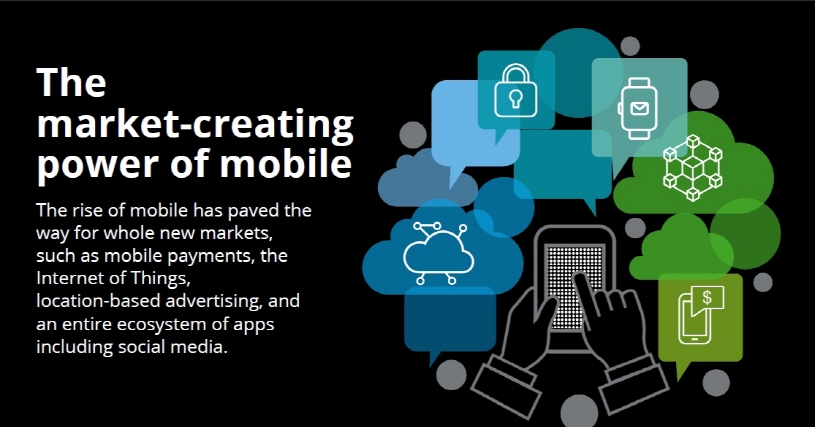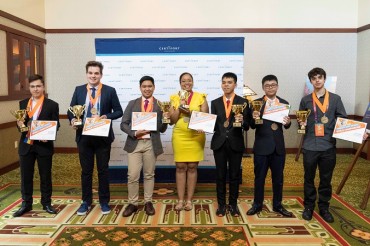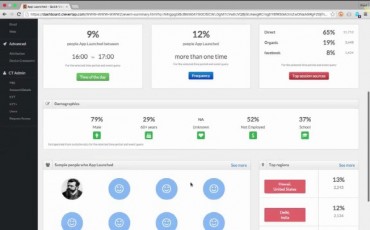NEW YORK, Dec. 13 (Korea Bizwire) – A new survey released by Deloitte today confirms American consumers’ dependence on mobile phones continues to rise as the platform of choice for work, home and self across an increasing range of tasks. Consumers now check their smartphone more than 9 billion times per day and increasingly do so while engaged in other activities, such as watching television (TV) – with 89 percent of consumers reporting simultaneous use of the TV and smartphone.
“Among the most interesting findings is how our reliance on mobile devices has changed the very nature of person to person communications; texting and other short forms of communication are beginning to dominate, enabling us to communicate more frequently and effectively,” said Craig Wigginton, vice chairman and telecommunications sector leader, Deloitte & Touche LLP. “This year’s survey data confirms that not only is the smartphone the central hub of consumers’ everyday lives, but consumers are willing to pay for a range of applications gaining steam in the market such as IoT for the home and car.”
The sixth edition of Deloitte’s “Global Mobile Consumer Survey” uncovered many interesting findings around American behavior, trends and general lifestyle shifts associated with the unprecedented usage of mobile devices today. These include:
Consumer phone addiction continues to rise across a broad range of work, home and personal tasks
This year’s survey shows mobile phone usage is up across the board with interesting shifts in demographics and usage including:
- Collectively U.S. smartphone users check their phones in the aggregate more than 9 billion times per day, up roughly 1 billion times per day since 2015, a 13 percent increase.
- Nearly half of those surveyed check their phones in the middle of the night – meaning as a nation, roughly 100 million people are waking up and checking their phone each and every night.
- Of all those looking at their phones in the middle of the night, more than 40 million people are checking social media.
- For the first time, 25-34 year-olds are the leading age demographic in mobile technology usage and purchased more smart phones in 2016 than any other age group; more than 75 percent of this group check their phone in the middle of the night.
- While nearly two-thirds of all consumers check their phone within 15-minutes of waking up, 90 percent do so within an hour.
- Text and other short forms of communication are becoming the dominant form. For the first time across all age groups, the first thing consumers access on their phones each day is texts or instant messages (IMs).
- The survey notes an increase in most data communication services underscoring how many different ways we now communicate with each other. Forty-five percent of consumers report more use of video calls compared with last year, 44 percent report more instant messaging, 35 percent report more social media use, and 25 percent report more traditional voice calls.
- Outside of work, 93 percent of consumers noted “using their phone while shopping” making it the No. 1 leisurely activity performed on consumers’ phones.
Wearables, Internet of Things and autonomous cars gain traction across key consumer segments: the answer to consumers demand for personalization
The survey revealed an increase in consumer interest of IoT for both home and autonomous cars. This increase is facilitated in-part by smart watches and fitness trackers as consumers are seeking solutions for personal automation, analyzing their everyday lives.
- With the biggest increase in IoT overall, interest in purchasing an autonomous vehicle is up 50 percent since 2015, with nearly two-thirds of consumers eventually willing to consider owning or riding in an autonomous car. The survey notes that 16 percent of those aged 25-34 are ready to take the plunge now – nearly double of last year’s figure.
- In 2016, interest in home-based IoT showed the largest year-over-year increase (among home, car and personal), jumping 12 percentage points from 53 percent to 65 percent, surpassing interest in personal wearables.
- Willingness to pay for IoT services has risen considerably, with half of consumers saying they are willing to pay for home monitoring services, and 48 percent indicating that they would pay for home control – both up roughly by 20 percent since last year
- Nearly a third of consumers also think smart energy, smart transportation and smart health care would make their communities more livable.
Mobile payments (mPayments) and mobile shopping remain key growth opportunities
Despite slower growth since last year, there is still considerable interest in mPayments, suggesting the potential remains for the technology to grow.
- More than half of consumers (58 percent) report they have used their phones to browse a shopping website or app, with 38 percent saying they do so at least once a week.
- Forty-three percent of 25-34 year olds report paying for products with or through their mobile phones at least once a week.
- The in-store mobile payments location that consumers regard as most useful are coffee shops, with 39 percent saying they find this beneficial.
- Other popular locations where consumers report using mobile payment services are fast food restaurants (38 percent), grocery stores (36 percent) and taxi cabs (32 percent). Only 6 percent would not find any location beneficial to use their mobile to pay.
Consumers are willing to share their data, to an extent
The survey found that, in general, consumers are open to sharing some level of personal information online, but actual awareness of what is being shared is not ubiquitous – nor are the methods people use to secure their phones.
- Thirty-seven percent of consumers indicated that they are willing to share usage data with select companies, as long as they can choose what information they share.
- One-third of consumers aged 55 or over, and one-fifth of all consumers believe they have never shared any information online.
- When unlocking their phones or authorizing mobile payments or other transactions, 63 percent of respondents prefer to use PIN passwords over fingerprint readers (31 percent), and 24 percent don’t use any method at all to keep their phones secure.
4G, 5G, Wi-Fi and original equipment manufacturers continue to influence consumer behaviors
Mobile devices have become an essential point of connection between consumers and the outside world, presenting multiple opportunities for businesses to monetize connectivity, through both services and devices. As the ecosystem evolves, there has been a shift in key purchasing and usage behaviors:
- Although Wi-Fi is still stated as the primary source of connectivity with a slim margin, with the usability of 4G and the promise of 5G, mobile networks usage have increased significantly. Fifty-six percent of consumers believe 5G data speeds will be important.
- Consumers report that 4G networks are consistently faster than Wi-Fi networks at home, with 22 percent reporting 4G speeds are “much faster” than Wi-Fi.
- Consumers list the cost of data plans and 4G/LTE availability and quality as their top reasons for choosing a carrier. Data plan costs are the No. 1 reason consumers say they would switch operators, marking the first time ever in this survey where the No. 1 reason for both choosing and switching an operator is the same.
- In the last two years, there has been a 16-point drop in the percentage of in-store buyers purchasing phones from carriers, and a 31-point drop in the percentage of online buyers purchasing from carrier websites. Manufacturer stores have benefited from this shift with a 400 percent increase coming from in-store sales and 300 percent increase coming from online sales.
“The growing reach of mobile networks and the prospect of exponentially faster data transmission are creating a powerful ecosystem that will continue to change the way we live and work in important and productive ways,” concluded Wigginton.
The “2016 Deloitte Global Mobile Consumer Survey” is the biggest and most extensive to date, including 53,000 respondents, aged 18 to 74, across five continents and 31 countries. Connect with us on Twitter: @DeloitteTMT, @CraigWigginton and #GMCS2016.
About Deloitte’s Technology, Media and Telecommunications practice
Deloitte’s technology, media and telecommunications (TMT) practice provides industry-leading audit, consulting, tax and advisory services to more than 1,800 clients in the U.S., including the vast majority of market category leaders across all sector segments. Deloitte practitioners, many with direct industry experience, work with one purpose: to deliver measurable, lasting results. They help reinforce public trust in our capital markets, inspire clients to make their most challenging business decisions with confidence, and help lead the way toward a stronger economy and a healthy society. TMT clients count on Deloitte to help them transform uncertainty into a possibility and rapid change into lasting progress. Deloitte practitioners know how to anticipate, collaborate and innovate, and create opportunity from even the unforeseen obstacle.
About Deloitte
Deloitte provides industry-leading audit, consulting, tax and advisory services to many of the world’s most admired brands, including 80 percent of the Fortune 500. Our people work across more than 20 industry sectors to deliver measurable and lasting results that help reinforce public trust in our capital markets, inspire clients to make their most challenging business decisions with confidence, and help lead the way toward a stronger economy and a healthy society.
As used in this document, “Deloitte” means Deloitte LLP and its subsidiaries. Please see www.deloitte.com/us/about for a detailed description of the legal structure of Deloitte LLP and its subsidiaries. Certain services may not be available to attest clients under the rules and regulations of public accounting.
Source: Deloitte








